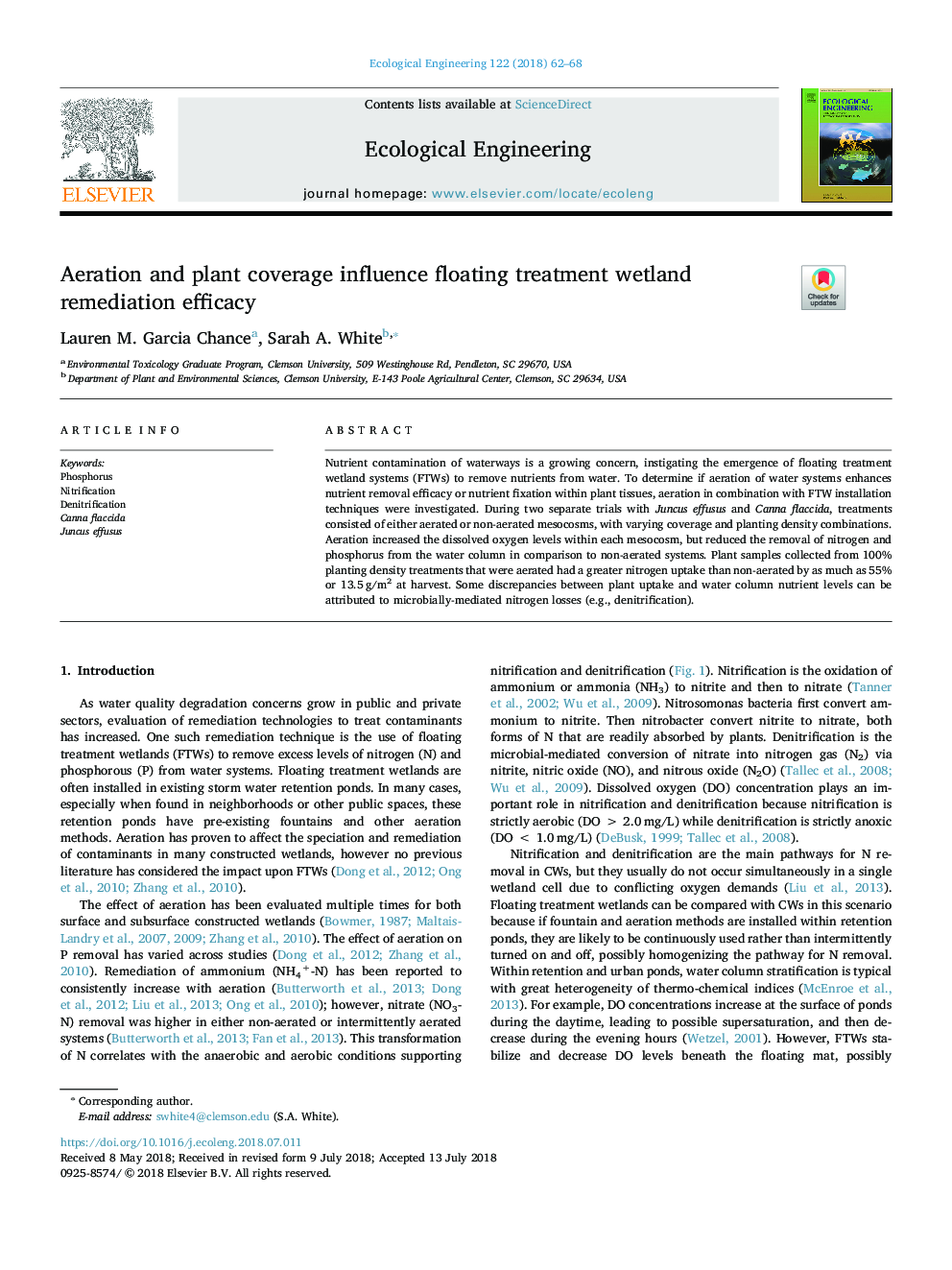| Article ID | Journal | Published Year | Pages | File Type |
|---|---|---|---|---|
| 8847691 | Ecological Engineering | 2018 | 7 Pages |
Abstract
Nutrient contamination of waterways is a growing concern, instigating the emergence of floating treatment wetland systems (FTWs) to remove nutrients from water. To determine if aeration of water systems enhances nutrient removal efficacy or nutrient fixation within plant tissues, aeration in combination with FTW installation techniques were investigated. During two separate trials with Juncus effusus and Canna flaccida, treatments consisted of either aerated or non-aerated mesocosms, with varying coverage and planting density combinations. Aeration increased the dissolved oxygen levels within each mesocosm, but reduced the removal of nitrogen and phosphorus from the water column in comparison to non-aerated systems. Plant samples collected from 100% planting density treatments that were aerated had a greater nitrogen uptake than non-aerated by as much as 55% or 13.5â¯g/m2 at harvest. Some discrepancies between plant uptake and water column nutrient levels can be attributed to microbially-mediated nitrogen losses (e.g., denitrification).
Related Topics
Life Sciences
Agricultural and Biological Sciences
Ecology, Evolution, Behavior and Systematics
Authors
Lauren M. Garcia Chance, Sarah A. White,
